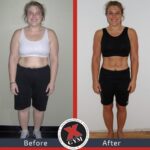 Why are there so many myths out there and why are they so pervasive and persistent? Mainly because mainstream media has perpetuated them, but also because people just don’t know any better, since they haven’t seen the recent research. Here are the top 7 exercise myths still circulating today and their modern answers, based on the research. I could cite thousands of studies, but I will limit it to just a few here, with a wide range of years to draw from, so you can see how long the truth has actually been available to us!
Why are there so many myths out there and why are they so pervasive and persistent? Mainly because mainstream media has perpetuated them, but also because people just don’t know any better, since they haven’t seen the recent research. Here are the top 7 exercise myths still circulating today and their modern answers, based on the research. I could cite thousands of studies, but I will limit it to just a few here, with a wide range of years to draw from, so you can see how long the truth has actually been available to us!
Myth #1: You have to exercise at least an hour to make it worth your while.
I’m still not sure where this one came from. Most trainers require an hour from their clients. Maybe they think it’s a value thing, but most of that hour is chit-chatting and rest periods, with very little real exercise taking place. Science has shown us that a 15 minute workout can cause much better results than the traditional long duration workouts. (http://jp.physoc.org/content/588/6/1011.abstract)
Myth #2: Weight training always bulks you up.
Traditional weight training with heavy weights and multiple sets can indeed bulk you up (http://www.ncbi.nlm.nih.gov/pubmed/21602648), but only if you train long enough. Bulking up was the reason traditional weight training was invented back in 1891, so the skinny guys of the late 1800’s could become bigger. Even with traditional training, it still requires 7 or more hours per week to bulk up, so unless you have that kind of time, don’t worry about it. Times have changed though, and most people now days don’t want to bulk up, because we are too big already and we are looking to reduce, not expand! The X Gym methods are specifically designed to do just that – to tone muscles instead of bulk them, and to burn fat to reduce circumferences and increase definition. We have known this for a long time (Berger, R. (1972, August). Strength & Health, pp. 44-45, 70-71), but most people still haven’t gotten the memo because they have just followed the crowd.
Myth #3: You can spot reduce by exercising certain areas.
We all have “problem areas” where we gain fat first and lose it there last. That’s just the way it is and there is no way to target certain areas to make them thinner (http://www.ncbi.nlm.nih.gov/pubmed/17596787). Your body will decide where to lose fat and in what order. Because losing it from your extremities makes you more efficient mechanically, it will probably start with your hands, feet, and head, progressing down your limbs, to your mid section last. Noticing and appreciating the places where you ARE losing fat and ignoring the “problem areas” will keep you on track, prevent you from becoming discouraged and even make results happen faster.
Myth #4: Low to medium intensity exercise burns fat best.
While it is true that medium intensity keeps you in your fat burning zone WHILE you are exercising, the facts are that high intensity exercise (HIT) burns more fat over the course of the day and even into the night while you sleep. In fact, Researchers at the Washington University School of Medicine in St. Louis found that HIT increased exercisers’ sleeping metabolic rate—the number of calories burned overnight—by nearly 8%. That means you are burning more fat while you sleep, which is the ultimate use of your time, don’t you think?
Myth #5: Steady state cardio is the best way to get fit.
Long duration cardio is pretty much a waste of time. It can even be unhealthy and detrimental to your fitness (http://www.ncbi.nlm.nih.gov/pubmed/21330616)! God created the human body to adapt as quickly as possible to new stimuli. That’s great for efficiency, but it slows continued results and encourages plateaus. Our physiology won’t however, adapt to high demand exercise, such as interval training (www.tabataprotocol.com), so to get in shape fast and reduce the time required, this is the shortest path.
Myth #6: You must train at least 3 times a week for optimal results.
While this may be true for traditional training, it certainly is not true for smart training. we have known this for a long time (Neuromuscular adaptation to power and endurance work. Can. J. Appl. Sport Sci. 1:49-58. 1976). At the X Gym, twice a week is optimal. Three times per week is actually too much because that doesn’t allow for enough recovery time (Health and performance related adaptations to resistive training. Sports Med. 11(4):210-231. 1991).
Myth #7: As you increase your fitness, more exercise is required for continual improvement.
Indeed, as you improve your fitness with traditional strength training and cardio, you do need to do more exercise to maintain your fitness and even more for continued improvement. That is why it requires 12+ hours per week for high fitness levels, like the people you see on the cover of Oxygen Magazine or Men’s Fitness. If you want to be a professional fitness competitor or bodybuilder, it requires even more time, to the tune of 30 or more hours per week. Personally, I spend less than an hour per week exercising and I am perfectly content with my fitness level and physique. To achieve my same results with traditional training would require 15 hours a week. How do I know? I use to do it before I knew better!









